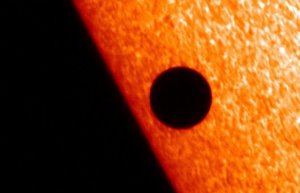Scientists spotted the first known evidence of oscillating neutrinos, and believe we are not far away from understanding these mysterious particles.
Scientists with Fermilab's NOvA experiment, which aims to uncover the secrets of elusive particles called neutrinos, released their first results this week. The recent success suggests the experiment's massive particle detector can detect neutrinos fired from 500 miles away. Neutrinos are the most abundant massive particles in the universe, but are still poorly understood. Gaining insight into which types of neutrinos are heaviest and which are lightest could lead to theories regarding how the particles get their mass.
"People are ecstatic to see our first observation of neutrino oscillations," said NOvA co-spokesperson Peter Shanahan of the U.S. Department of Energy's Fermi National Accelerator Laboratory. "For all the people who worked over the course of a decade on the designing, building, commissioning and operating this experiment, it's beyond gratifying."
The neutrino beam generated at Fermilab uses an underground near detector that measures its neutrino composition. The particles then travel more than 500 miles through the Earth, oscillating the whole way along. When a neutrino comes into contact with an atom in the detector, it releases a signature trail of particles and light, indicating whether it is an electron, muon or tau neutrino. Most of the neutrinos in the beam originating at Fermilab is made of muon neutrinos, and scientists can now determine how many of them disappear during the journey and reappear as electron neutrinos.
If oscillations did not occur than it is predicted 201 muon neutrinos would arrive at the NOvA, but instead only 33 were detected. This suggests that when the neutrinos disappeared, they reappeared as one of the two other "flavors." Past experiments such as T2K in Japan and MINOS at Fermilab have already observed these neutrino interactions, but NOvA is able to see these results in a shorter time frame.
"One of the reasons we've made such excellent progress is the impressive Fermilab neutrino beam and accelerator team," said NOvA co-spokesperson Mark Messier of Indiana University. "Having a beam of that power running so efficiently gives us a real competitive edge and allows us to gather data quickly."
The results were presented at the American Physical Society's Division of Particles and Fields conference.
© 2025 HNGN, All rights reserved. Do not reproduce without permission.








